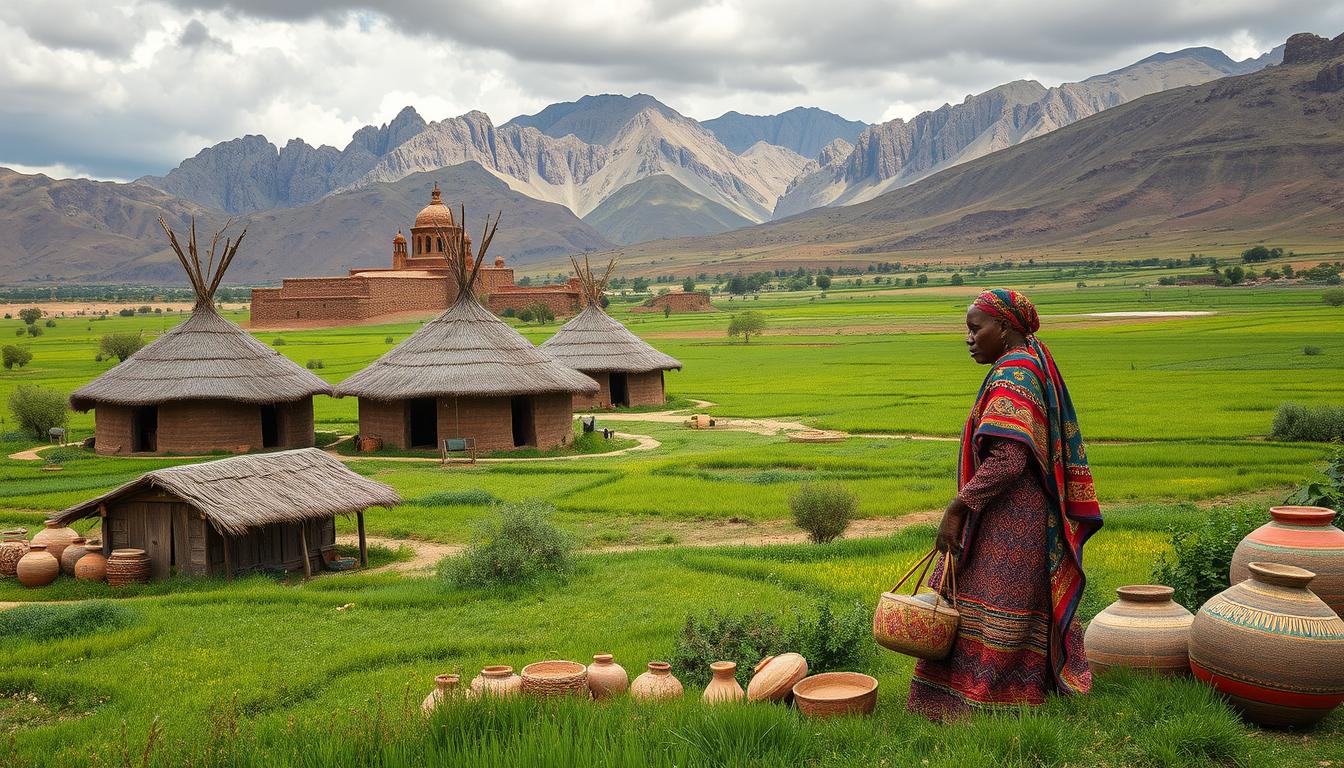Ethiopian culture is an intricate tapestry woven from a rich history, diverse ethnicities, and unique traditions. Covering an area of 439,580 square miles, Ethiopia is the tenth largest country in Africa and boasts a highland plateau that ranges from 6,000 to 10,000 feet above sea level. With around 80 distinct ethnic groups, each contributing to the vast array of Ethiopian cultural heritage, you will find elements that make every visit a remarkable experience. The Oromo, Amhara, and Tigrean groups alone account for more than 75% of the national population. Notably, Ethiopia has never been colonized, leading to the preservation of its customs and practices that have thrived throughout centuries.
One of the most striking aspects of Ethiopian culture is its deep-rooted Christian heritage. The Ethiopian Orthodox Tewahedo Church, one of the oldest Christian traditions in the world, plays a significant role in shaping the national identity. It dates back to the early days of Christianity, long before many Western nations embraced the faith. Throughout this blog, you’ll embark on a journey to explore various aspects of Ethiopian culture, from its ancient roots and rich history to contemporary practices and vibrant artistic expressions. Get ready to learn about the unique nuances that define Ethiopian cultural heritage!
A Journey Through Ethiopian History
Ethiopia’s history is a rich tapestry woven from the threads of ancient civilizations and empires. As you delve into this remarkable past, you will discover how the country has evolved while maintaining its unique identity and traditions over the centuries.
Ancient Civilizations and Kingdoms
The Kingdom of Aksum, existing from the 1st to the 7th centuries AD, marks one of the earliest documented periods in Ethiopian history. This civilization was remarkable for its advanced architecture, including the iconic obelisks and stone carvings that still capture the imagination today. These ancient civilizations played a pivotal role in trade and cultural exchanges with regions beyond its borders, showcasing the importance of Ethiopia in the historical narrative of the Horn of Africa.
The Solomonic Dynasty and Christian Heritage
Ethiopia’s Christian heritage roots trace back to the 4th century with the establishment of the Aksumite Empire’s adoption of Christianity. The Solomonic dynasty, which ruled until 1974, further fortified this heritage through the construction of historical landmarks like the rock-hewn churches of Lalibela. These churches, recognized as UNESCO World Heritage Sites, reflect the deep spiritual and architectural significance in Ethiopian culture, representing resilience against colonial ambitions.
Resistance and Preservation of Sovereignty
Ethiopia’s history is also defined by its resistance against foreign colonization, particularly during the brief Italian occupation from 1936 to 1941. This determination to preserve sovereignty became a symbol of African independence, highlighting Ethiopia’s unique place in the world. The country transitioned to a federal republic in 1995, illustrating its ongoing commitment to sovereignty and self-determination while balancing modern advancements.
Exploring Ethiopian Culture: Traditions and Art
Ethiopia’s cultural landscape is shaped by its stunning ethnic diversity, represented by over 80 different groups and languages. This rich tapestry of cultures influences various aspects of Ethiopian traditions, from culinary practices to vibrant festivals. You will find how this remarkable blend of heritage forms a unique identity that is both historical and contemporary.
Ethnic Diversity and Cultural Practices
The nation’s ethnic diversity is reflected in daily life and traditions. The Afro-Asiatic ethnic groups, including the Oromo, Amhara, and Tigray-Tigrinya, dominate the population, constituting about 75%. Each group possesses unique customs and dialects, contributing to a variety of cultural expressions. Arts, music, and festivals showcase these traditions and highlight the deep-rooted values of family and community.
Culinary Traditions and Rituals
Culinary traditions play a significant role in Ethiopian culture, characterized by the staple food teff, from which injera—a pancake-like bread—is made. Meals embody communal sharing, with thick, spicy stews known as wats often served. The use of diverse ingredients like chicken, vegetables, and lentils reflects the country’s agricultural richness. Cooking and sharing these meals is more than nutrition; it fosters social bonds and maintains cultural identity.
Festivals and Celebrations
Ethiopian festivals are colorful and lively, showcasing the country’s cultural heritage. Celebrations often include music, dance, and traditional performances, deeply rooted in religious beliefs and historical events. Major Ethiopian festivals draw large crowds, offering a chance to engage with both local customs and the deep narratives that define this diverse nation. The interplay of communal activities and spiritual practices further enriches the vibrant tapestry of Ethiopian traditions.

| Aspect | Description |
|---|---|
| Ethnic Groups | Over 80 different ethnic groups contributing to cultural diversity |
| Languages | At least 77 distinct languages spoken across the population |
| Culinary Staples | Teff and injera central to traditional meals |
| Religious Influence | Ethiopian Orthodox Christianity plays a significant role in cultural events |
| Festivals | Joyful celebrations marked by music, dance, and traditional gatherings |
Conclusion
Ethiopia’s rich cultural tapestry is woven from its ancient history, diverse ethnic backgrounds, and vibrant traditions. This Ethiopian culture guide reveals a nation that values its heritage while demonstrating resilience in the face of modern challenges. With over 80 ethnic groups and a considerable youth population—over 40% of which is under the age of 15—Ethiopia embodies a dynamic interplay between tradition and contemporary influences, allowing it to maintain a robust Ethiopian identity.
As you explore the unique culinary practices, colorful festivals, and varied cultural experiences in Ethiopia, you’ll come to appreciate not only the beauty of its heritage but also the shared values that unite its people. The nation’s ability to preserve its traditions amidst ongoing political and social changes speaks volumes about its cultural significance and the strength of its communities. Engaging in Ethiopia cultural experiences offers a first-hand encounter with a society that thrives on unity and pride.
Ultimately, your journey into Ethiopian culture will enhance your understanding of its extraordinary history and the multifaceted identity of its people. In appreciating the layers of Ethiopian cultural experiences, you discover the heart and soul of a remarkable nation that stands as one of the oldest civilizations on earth, forging ahead while honoring the past.

